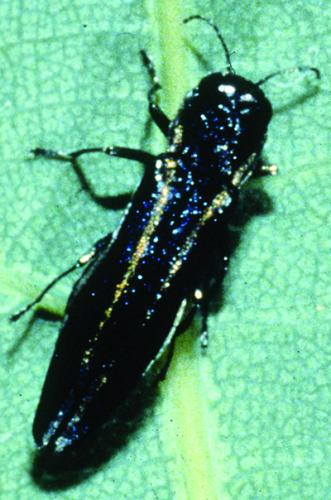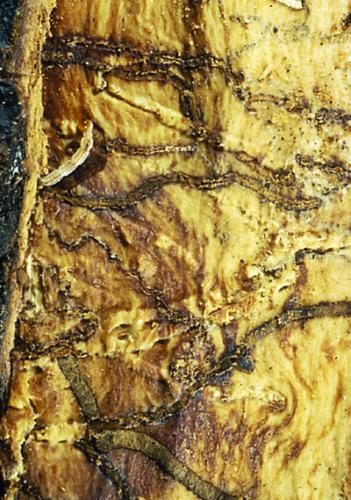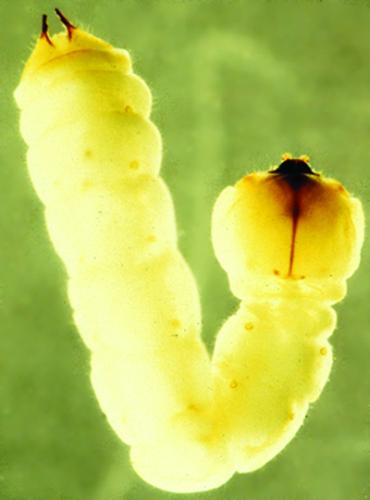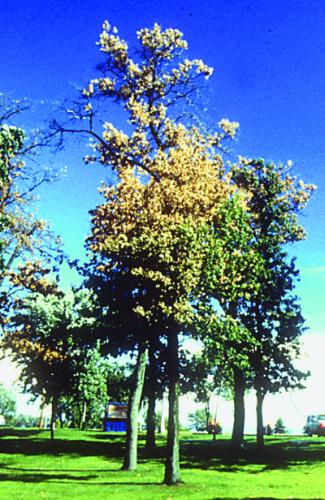Twolined chestnut borer
July 31, 2015
Agrilus bilineatus
Twolined chestnut borer is primarily a pest of oaks. Adults, found from mid-June through September, are rarely seen. They lay their eggs in bark fissures and cracks around late June or early July. Larvae burrow into the bark and feed in the phloem. Larval development may take up to two years. Emerging adults chew a D-shaped exit hole in the bark. Injury symptoms begin in the upper part of the crown and proceed downward.

Adult is a metallic wood boring beetle (Buprestidae) 10-13 mm long.
Trees exhibit sparse foliage, chlorotic leaves and dieback. D-shaped exit holes (about 1/8 inch in diameter) may be visible in the upper part of the tree. Long, winding galleries packed with frass can be found under the bark in areas where larvae are present.

Bark removed to show galleries of twolined chestnut borers.
Management
Stressed trees are much more prone to injury. Help keep trees healthy through proper site selection and watering; protect from construction injury. Once injury occurs, damage may be pruned out if it isn’t too extensive.

Above: Larvae of buprestids are commonly known as flat-headed borers due to the broad, flattened thorax, as shown on the larva in the photo. Below: A layer-cake effect of dying and live branches occurs on oaks infested with twolined chestnut borers.

Print a PDF of this page: Twolined chestnut borer



 Print
Print Email
Email



